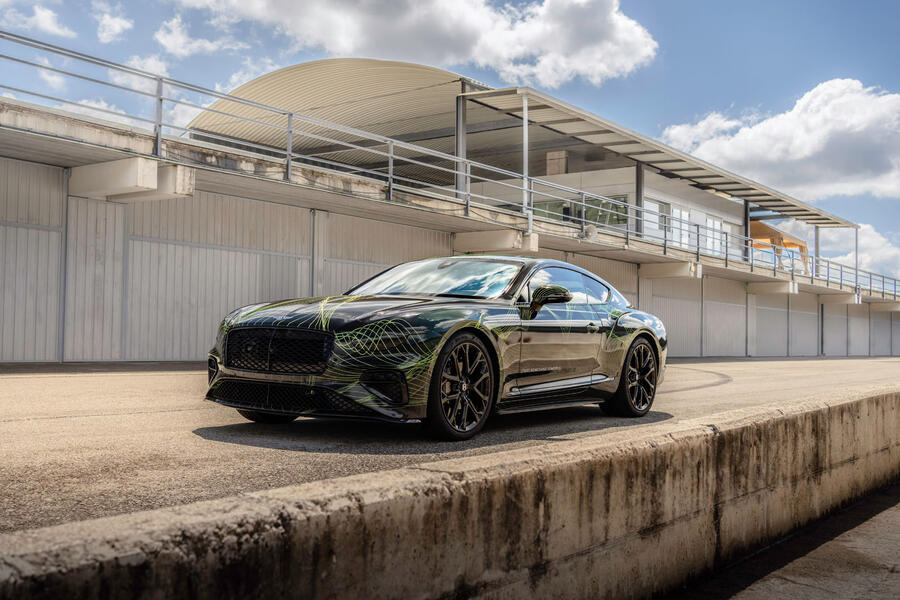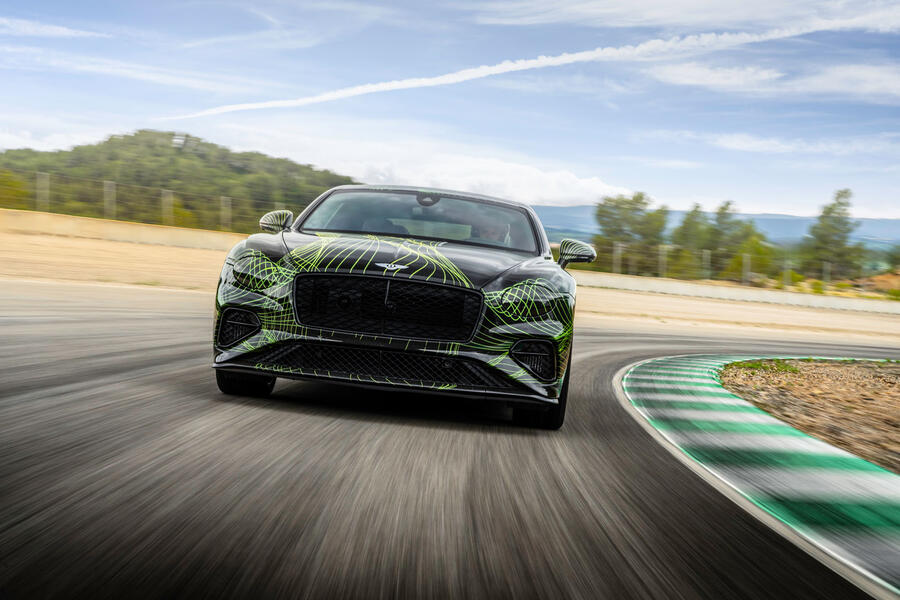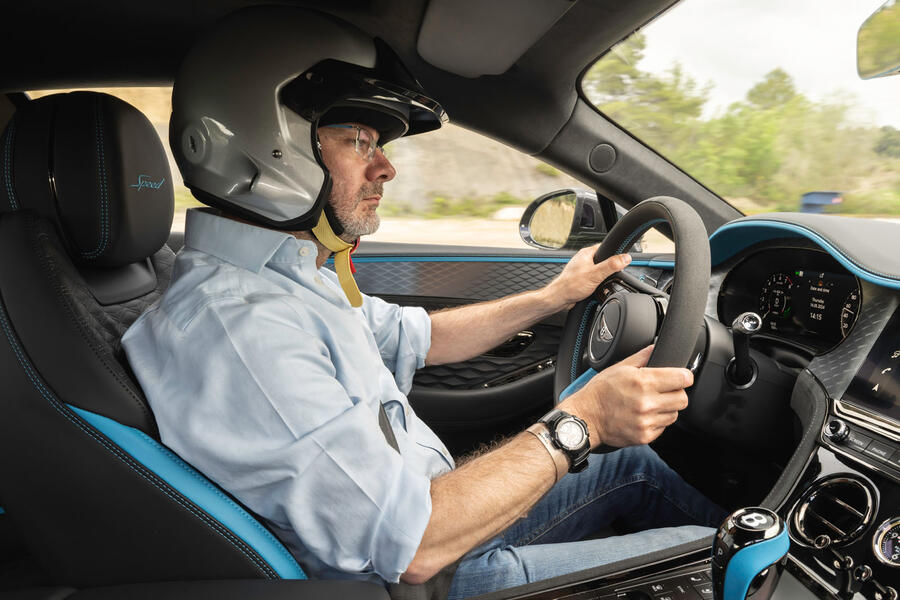The new Bentley Continental GT Speed will be revealed next Tuesday (25 June) with a storming 771bhp plug-in hybrid powertrain replacing the retired W12 motor.
Bentley has confirmed this most powerful PHEV version of the fourth-gen Continental, which Autocar has already driven on track (see below), will wear the hallowed Speed moniker previously reserved for the top-rung W12 car.
The final and most potent Speed-badged W12 car was revealed last year with 650bhp, 664lb ft and a 0-62mph time of just 3.6 seconds.
Despite dropping four cylinders, the new PHEV powertrain comfortably outpunches its pure-ICE predecessor with its generous power reserves supplemented by a whopping 738lb ft of torque, to shave 0.4secs off the 0-62mph sprint time.

Bentley has also already confirmed that the new Speed will be able to travel up to 50 miles with the engine off, courtesy of a 25.9kWh battery under the boot floor.
Full technical specs will be given at the reveal event next week, along with the Continental's new look, heavily inspired by the limited-run Bacalar and Batur coachbuilt creations. Read the first drive below for our first impressions before the wraps come off.
2024 Bentley Continental Speed PHEV prototype review
To replace the departing W12 engine in the Bentley Continental GT, the company is introducing a V8 plug-in hybrid powertrain. Badged Speed, it is the most powerful Bentley yet and is at the heart of this new-generation Continental, the fourth version of the company’s staple four-seat grand tourer since 2003. It rivals the Aston Martin DB12 and Ferrari Roma.
Combined, the 4.0-litre V8 and electric motor make a total of 771bhp and 738lb ft, or the car can drive on full electric alone (at 188bhp) for more than 50 miles. The powertrain drives all four wheels, heavily rear-biased, through an eight-speed dual-clutch automatic gearbox.


































Join the debate
Add your comment
I'm a Matt Prior fan but: the idea that any Conti driver will even imagine trail braking into a corner is just, well, daft. Contis are for strolling across er Continents. No-one is going to do a track day in one. What I'd want to know, if I was in the market, is how many of my wife or mistress's suitcases can I get on board. If the former is there anything to keep the kids amused/silent in the back seats? If the latter can she get out elegantly without showing off her knickers? The obsession of muttering rotters with 0-60 times and how fast a car could get around the Nurburgring is silly.